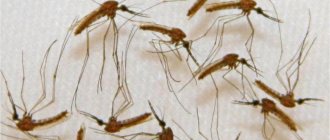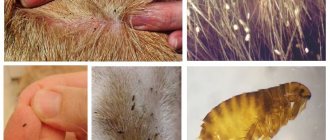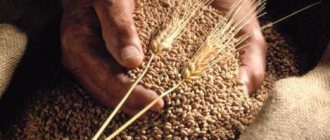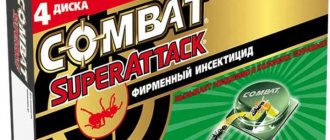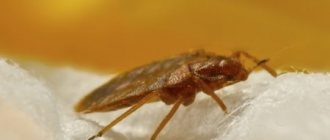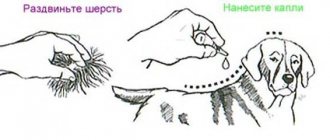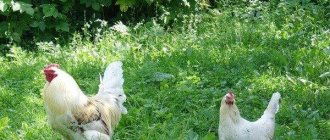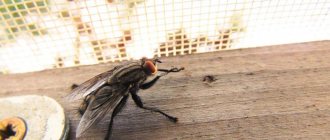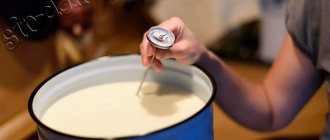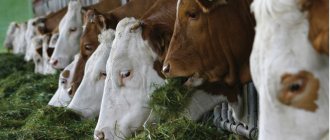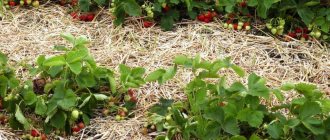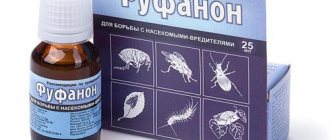The development of livestock farming necessitates an increase in the amount of feed for livestock. According to statistics, about half of the entire average annual grain harvest is spent for these needs. At the same time, of the total mass, 15-20 million tons fall on wheat. To reduce the cost of livestock products, instead of more expensive food grains, feed grain is used. It is intended directly for feeding livestock. Feed is cheaper. This allows us to reduce the cost of livestock products.
Purpose of forage
The word "forage" is translated from French as "feed". Feed wheat is wheat that has not passed food market quality control and is therefore not suitable for human consumption. The composition of this grain is ideal for feeding farm animals: cattle, small cattle, poultry, nutria, rabbits, etc.
Feed wheat is not specially cultivated and is not prepared for sowing. In addition to grains, hay and cut plant parts of wheat and other cereals (straw) are called fodder.
Key Features
The main distinctive feature of cereal grains, called feed grain, is its low quality compared to that which is supplied to the food market and used after processing for human food. Also, forage is not used as seeds for sowing fields, since the sprouts are weak and often die.
Feed grain is suitable for use as feed for farm animals, but before purchasing you should pay attention to its quality.
The following features are characteristic of feed grain:
- a large percentage of damaged grains;
- high concentration of starch;
- a small amount of fats and carbohydrates;
- high energy value and the presence of essential vitamins.
However, it must be remembered that fodder refers not only to cereal grains, but also to other types of feed that are usually used to feed livestock. They are used both fresh and dried (in winter).
What are the requirements for the product?
There are certain requirements for feed wheat. International quality standards and GOST allow any variety and type of wheat, but strictly regulate the following indicators:
- Appearance. The grain must be healthy, have normal color and shape. There should be no smell of mold, rot, malt, etc.
- Impurities. In the total mass of feed wheat, it is not allowed to contain more than 15% of other grains, more than 1% of weed seeds, and more than 3% of mineral waste.
- Infection with fungal diseases. The grain affected by fusarium should be no more than 1%, and up to 10% by smut fungus. Infection with other diseases is not allowed.
- Presence of pests. The fodder should not have any pests in its total mass. Damage by insects and microorganisms that can harm livestock is not allowed.
- Humidity. This figure should not exceed 15%.
Usage
Corn is a unique plant in terms of its breadth of use. Flour, cereals, molasses, starch are made from its fruits, and used for the production of beer and alcohol. Do not forget that paper, viscose, insulating films, linoleum, even film are made from its stems, cobs, and covering leaves. Everyone knows that medicine uses corn silk to treat kidney stones, stimulate the liver, kidneys and gall bladder. In addition, corn is used to make feed for livestock.
Feed corn is perfectly stored in specially equipped premises, from where agricultural enterprises sell it for the production of oil or feed to everyone.
Those who grow edible corn on their plots or buy it at the market boil it for several days. It can only be preserved by freezing or canning.
If suddenly it occurs to someone to use sweet corn for feed, then this can also be done immediately after harvesting. But this is unlikely, because its production is more expensive than fodder. This is what we buy all year for salads and side dishes, take expensive tin cans home and enjoy its sweet, delicate taste.
Advantages and disadvantages of feed wheat
The advantages of forage include:
- Valuable composition. optimally suited for feeding livestock. When additional sources of lysine and phosphorus are introduced into the diet, the body's metabolic processes are stabilized, and the health and development of animals improves.
- Easy to store. The increased carbohydrate content does not accumulate moisture inside the grain, which prolongs its shelf life.
- Low price. Depends on the harvest, variety and quality of grain, but is always lower than prices for grain of higher classes.
Disadvantages of feed wheat:
- a large amount of starch in the composition can cause gastrointestinal diseases in animals;
- the predominance of carbohydrates against the background of protein and fiber deficiency can lead to obesity in livestock;
- Low levels of sugar, fat and fiber can cause indigestion or poor absorption of grains.
Negative consequences occur only from the use of forage in its pure form. Prepare the diet for animals and birds correctly to get only positive effects from forage.
Checking grain before sale
It is worth noting that feed grain is not specially grown, since it is not suitable for sowing - it is taken from wheat grain grown for the food industry that has not passed quality control.
When selling feed grain, each batch must be accompanied by a package of documents confirming quality. For large shipment volumes, grain samples are taken from several random bags and sent for laboratory testing to obtain a conclusion about its quality.
The results of the analysis, the presence or absence of pathogenic microorganisms and other indicators are indicated in the quality certificate and must comply with GOST, otherwise the batch will not be accepted for sale.
Such grain can be sold both on domestic and foreign markets. Feed wheat is shipped for export at the ports of Ukraine - AmbarExport will become your reliable partner at all stages of cooperation.
The final cost of products is influenced by several indicators:
Classification of feed wheat
Depending on compliance with such indicators as appearance, mass fraction of gluten and its quality, glassiness, wheat is divided into several classes. World and domestic standards may differ from each other and include 5 classes for durum wheat varieties or 6 classes for soft wheat, which are combined into 3 groups:
- Group “A” includes grain of classes 1-3. This is the best wheat used in the food industry. Only this grain is exported to the foreign market and is called strong.
- Group “B” includes class 4 wheat, rich in strong varieties. Pasta and crushed cereals are produced from this grain.
- Feed wheat includes grain of class 5-6.
Whatever the classification, feed grain is always of the lowest quality, and therefore belongs to the lowest class. It is never used in food and is not mixed with stronger varieties.
Crop care
Caring for spring wheat crops includes: a set of measures aimed at combating weeds, additional fertilizer after germination and during the flowering period (if necessary), treating crops against harmful insects and diseases. Typically, treatment with any preparations is carried out using agricultural aviation - this is much faster, more efficient, and with minimal trauma to the seedlings.
Let's look at the main diseases to which winter wheat crops are exposed:
- rust
- powdery mildew
- root rot
- smut
- bacteriosis
Thanks to the winter form of cultivation, some of the causative agents of these diseases are suppressed by severe frosts. But in cases of mass infection of crops, treatment with Bayleton, Tilt, Fundazol is necessary.
If the effect is insufficient after a one-time treatment, a repeat treatment is carried out.
The main signs of these diseases are slower growth, discoloration of spikelets and stems, absence of ovary or development of small spikelets, and rotting of roots.
The pests that attack winter wheat crops most often are:
- bread beetle
- grain fly
- bread drinker
- ground beetle.
What needs to be done to prevent this problem? First of all, high-quality loosening of the soil and the introduction of special preparations capable of destroying pest larvae.
Of particular importance is also high-quality post-harvest seed cleaning and dressing, sowing spring wheat after the “correct” predecessors. For post-emergence treatment of crops, the preparations Karate, Bazudin, Diazinon are used
For post-emergence treatment of crops, the preparations Karate, Bazudin, Diazinon are used.
How to use forage to feed livestock?
Forage is a universal feed used in poultry, livestock and fish farming. Norm of feed wheat in the basic diet for:
- small livestock and pigs - up to 40%;
- Cattle - up to 35%;
- horses - up to 30%;
- small domestic animals from 20 to 40%;
- birds - up to 60%.
Depending on the variety of wheat and its qualities, the direction of use of the cereal and its preparation depends:
- With an increased cellulose content in feed wheat, it is suitable for feeding cattle, small cattle and horses.
- Less cellulose allows the grain to be fed to pigs, poultry and fish.
- To feed poultry and small animals, use soft varieties of fodder grain. Hard grain must be steamed, sprouted or crushed. Cattle and pigs can be given feed based on durum wheat.
It is optimal not only to include feed wheat in the composition of compound feeds, but also to use this grain as the basis for the compositions. Whether the grain will be completely digestible by animals depends on the quality of the formed feed and its composition. Add other foods to it to compensate for the damage caused by the high starch content. Enrich the composition by adding fats, protein, fiber, and a vitamin and mineral complex.
Types of corn
There are several varieties that differ from each other in grain composition, appearance, shape, and structural features:
- Dentoform.
- Siliceous.
- Waxy.
- Sugar.
- Bursting.
- Starchy.
- Membranous.
All these types, except filmy, are widely used in various branches of food production. There are also several hybrid varieties derived from the listed species.
Each species includes many varieties.
Dental corn
Tooth corn is so called because of the similarity of the shape of the grains to the shape of horse teeth: they are elongated, oblong, dense, and have a depression at the top. This species is characterized by high productivity and particular unpretentiousness. Kink corn is the most economical variety of maize. It is cultivated in all corn-producing countries.
Flint corn
Flint corn grains are shiny, smooth, and rounded at the ends; the color of the cobs can be either white or yellow. The species is characterized by a high content of solid starch. Characterized by endurance, excellent yield, short ripening time. The grains are used to produce flakes, cereals and other raw materials. Unripe cobs have a delicate sweetish taste and are often consumed boiled.
In the photo: completely unique ears of flint corn of the Glass Gem variety, obtained as a result of long-term selection of plants with grains of unusual color.
Waxy corn
This species gets its name due to the wax-like consistency of the grains. The surface of its grains is hard, matte, smooth, and the color may vary. This is not a very hardy variety with low yields, but its grains have a unique chemical composition of starch. Thanks to this, the flour made from them is characterized by increased stickiness.
Sweet corn
This is the undisputed leader in cultivation among all types of this grain crop. Due to its delicate sweetish taste, it is called milk corn in everyday life. As the name suggests, the fruits of this species are characterized by a high sugar content; its amount in the sweetest varieties is 10–12%.
The color of the grains is usually yellow, but depending on the variety and the degree of maturity of the cob, it can have shades from almost orange to yellowish-white. The shape of the grains can also vary greatly. When cut, grains of this type have a glassy consistency and contain large amounts of sugar.
Attention! The sugar maize crop is harvested before reaching full maturity and processed as quickly as possible, otherwise the grains lose their taste.
Corn popping
The cobs of this plant species can be of two varieties: with a sharp end and with a rounded end. They are usually somewhat smaller than other types of corn on the cob. The color of the grains may vary between species. The chemical composition of the grain is characterized by a high protein content, and its structure is such that when heated, the moisture contained in the germ evaporates and breaks the hard, thick skin. Interestingly, this variety has a bushy stem, with several ears ripening on each stem.
Attention! In addition to the familiar popcorn, cereals, flour and corn flakes are made from this type of cereal.
Starchy corn
Maize of this variety has a high starch content, which can be up to 80%. Thanks to this chemical composition, the grains are soft, mealy in consistency, easy to process into flour and molasses, and are a raw material for distilling alcohol.
Membranous corn
Due to the peculiar scales covering the grains of this species, it was not used in the food industry. In some African countries it is grown for livestock feed.
Storage rules
Grain with a moisture level of no more than 12% is sent for storage. At the same time, in the granary this figure should be at the level of 40-75%, and the air temperature should not exceed 80 degrees.
Feed wheat tolerates storage well, but to extend its life while maintaining grain quality, follow the following rules:
- dry the grain before storing it in the granary;
- do not mix forage with different levels of moisture and contamination, so as not to provoke spontaneous heating of the wheat;
- do not combine chilled forage with heated dried grain;
- Do not store healthy wheat in the same room as damaged or contaminated grain;
- control the humidity of wheat and air in the grain storage throughout the entire storage period.
Depending on the dryness of the grain and the time of year, the height of the forage storage layer in bulk differs significantly:
- In the cold months, raw wheat is covered in a layer of up to 2 m, wet grain - up to 3 m, medium dry grain - up to 4 m.
- In the warm season, the thickness of the layer is reduced by 1.5-2 times.
It is considered optimal to store feed wheat in plastic bags. They do not allow light or moisture to pass through, and prevent contamination of grain by pests and diseases.
Equipment examples
| Name | power, kWt | Possibilities | Cost in rubles, |
| PDA | 4-5 | Multifunctional line | From 550,000 |
| KKU | 4-5 | Multifunctional line | From 450,000 |
| LBMVC | 16-30 | For protein and mineral supplements | From 150,000 |
| LH | 30-130 | Industrial granulator | From 170,000 |
| LG mini | 15 | Household granulator | From 90 000 |
| PZ | 3-5 | Flattening | From 70 000 |
| DKR | 10-100 | grain crusher | From 170,000 |
| SSK | 1-5 | Screw type mixer | From 70 000 |
| SVG, SL | 1-11 | Horizontal mixer | From 90 000 |
| TS | 1-5 | Screw | From 80 000 |
| BM, BGP | 1-15 | Bunker | From 65,000 |
| OGM, DG | 20-110 | Granulator | From 350,000 |
| DG mini | 2-22 | Household type granulator | From 70 000 |
| EVDU | — | Dispenser | From 45 000 |
The cost of a high-quality line ranges from 300,000 rubles. It can take up to 1 million rubles to purchase ready-made feed for the season. If you buy grains separately, it comes out 2-3 times cheaper. The payback period for a small plant is a year and a half. The profitability of production is quite high.
How to choose feed wheat?
When choosing feed wheat, focus not on prices, but on grain quality. Read the documentation, check the color, smell, integrity of the cereal.
When purchasing large quantities, entrust the analysis of forage to professionals by sending samples for analysis to the laboratory.
Feed wheat is the basis of feed in agriculture. Certain requirements are imposed on its quality, and storage of such grain is possible subject to a number of conditions. When choosing forage for your livestock, make sure it meets the regulations. This will allow you to use all the advantages of grain and avoid the harmful consequences of its use.
0
0
Copy link
Are feed concentrates used when baking bread?
Thus, fodder - cereal grains and legumes - is intended mainly for feeding farm animals. In Soviet times, regulations prohibited the use of such concentrates when baking bread. Today, cooks and bakers, unfortunately, do not observe any special standards in this regard. In the production of bread, they can also use low-grade flour. This, of course, does not have the best effect on the quality of the finished product.
To improve the structure of bread made from low-grade flour, manufacturers use various types of improvers. This is basically gluten in its pure form. But be that as it may, feed grain itself (grade 5 flour) is still not used very often for baking such products. Usually cheap bread is produced using 3-4 grades of flour.
Full production cycle
The types of equipment that are possible for cooking are numerous. Manufacturers offer various line configurations that differ in power.
The most profitable farm purchase is a multifunctional machine. It is capable of performing all processes simultaneously (crushing, mixing, grinding). A fresh batch can be created shortly before feeding, and made in a convenient form: granular or crumbly.
The machine will process any cereal mixture, grind grass, and other components of your recipe. The units are powerful and allow you to produce up to 1/t of feed per hour. Models differ in functionality, and some components are interchangeable.
At the beginning of the process, you need to place the cereals in the crusher. The component can be turned into flour or chaff, select the desired size of the grain. The crushed grain goes into the dispenser, where other components can be poured. To accurately determine doses, the unit is equipped with scales.
From the dispenser, all components are moved through the auger into the mixing bowl. A mixer works inside it, turning the components into a single mass.
If a granular version is needed, the finished composition is moved along a conveyor to the press. It uses pressure to produce granules of the same size and weight. Final processing occurs under air flow in a special column.
The profitability of multifunctional units is determined by their cost. Well-known models are presented by both domestic and imported companies. To create a line at home, it is better to purchase versions of well-known brands, since they will be easier to repair later.
If you have the funds, it is better to consider modern equipment with good performance and energy consumption. If you don’t have enough finances, consider Russian lines that are multitasking.
